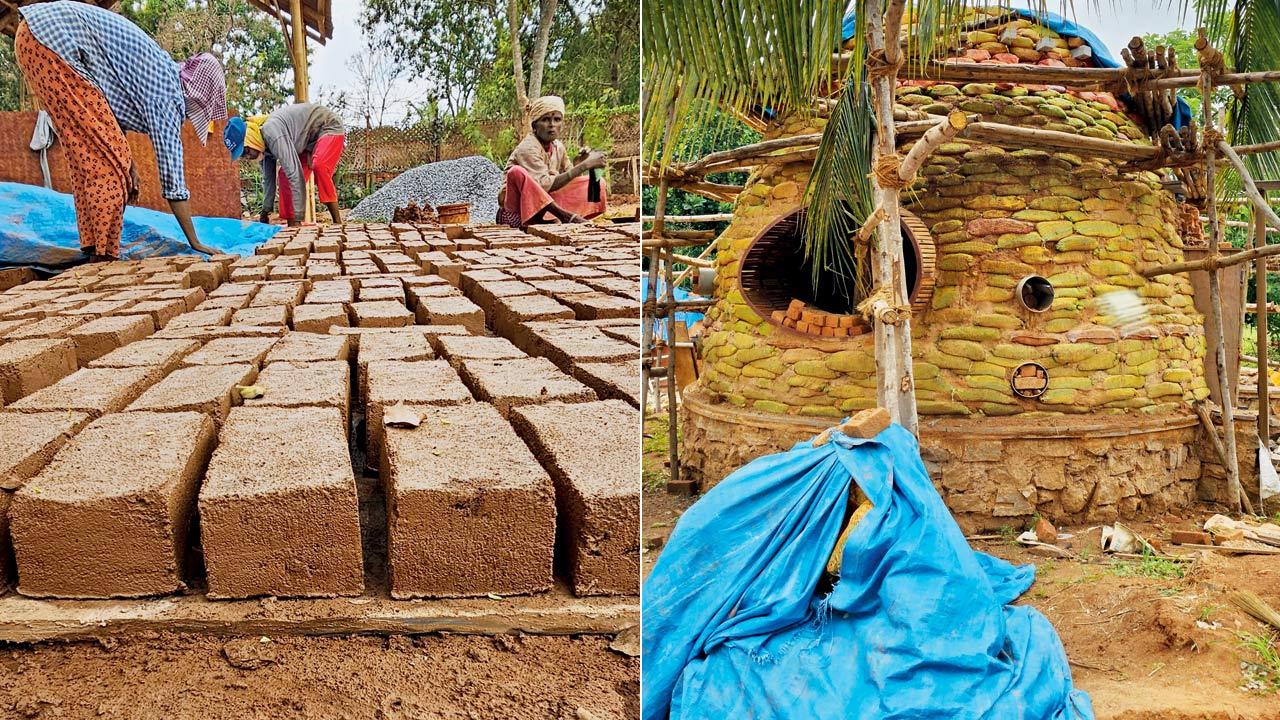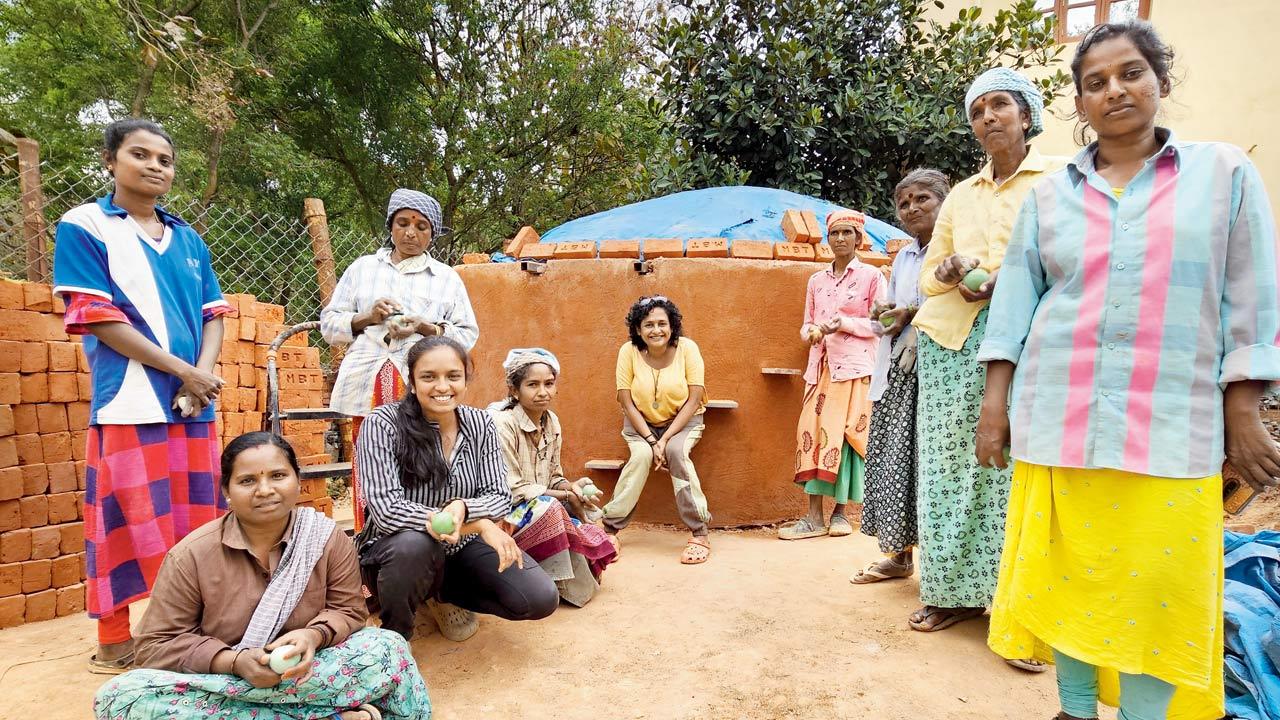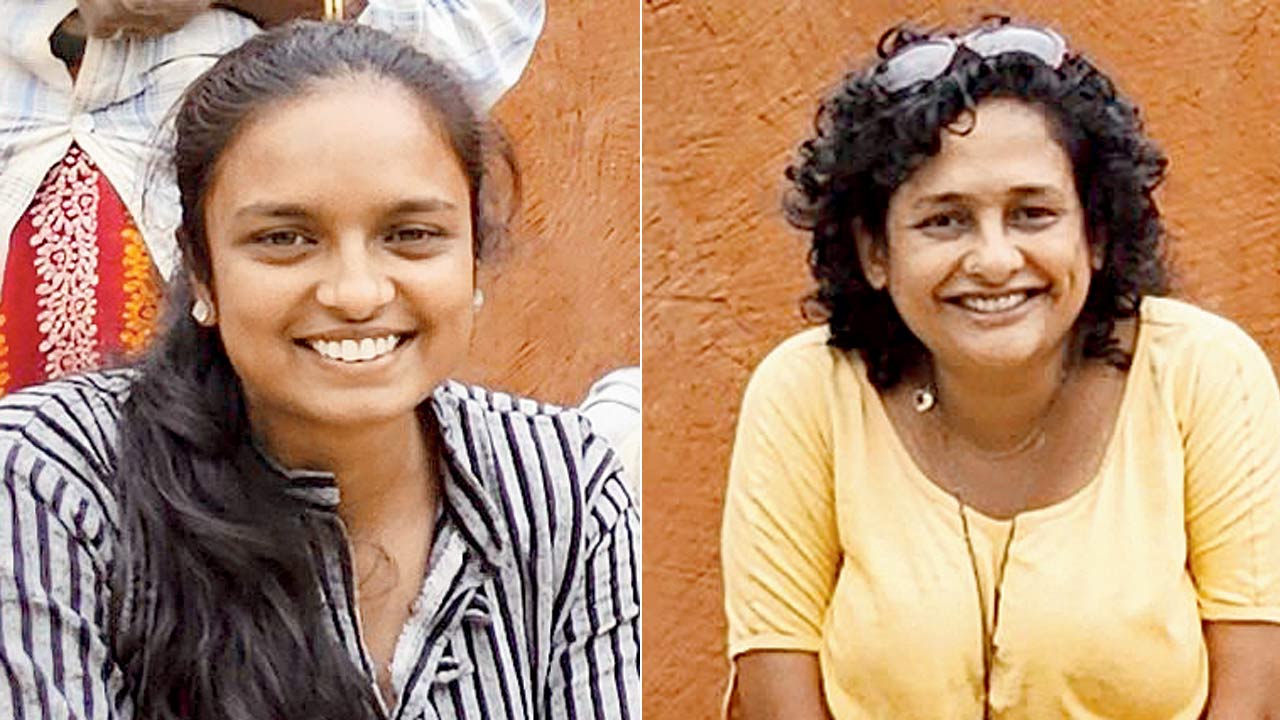An author and canine behaviourist’s women-driven project is emphasising the need for slow building, natural construction and vernacular architecture

The pole at the centre is a compass used to measure radius to get a circular building. Pangal says the team had to figure all this out on their own
"A lot of beauty in the world is rooted in a lot of pain,” author, canine behaviour and myotherapist Sindhoor Pangal, who lost her husband about two-and-a-half years ago just before the second lockdown, tells us. “We were very close and I was completely heartbroken. He and I were college sweethearts and after his loss, I could not handle the city at all. We had memories that we had built in every part of it. I wanted to leave. I was looking for a place to heal.” It was around this time that Pangal bought a farmland outside Bengaluru with the intent of building a mud house. While the idea of a mud construction aligned with her eco-conscious lifestyle, there was also something restorative about the process of working with mud. “A mud structure combined my philosophy with my need of the hour. I had to do something creative because grief is so all-consuming that you have to do creative things to learn to carry that grief,” she says. The architects at design firm Masons Ink, who laid out the initial design, too understood this need. “This was not just a house; this was a journey into a new life for me.”
ADVERTISEMENT
The early reliance on architects stemmed from the fact that there are few contractors who can build with natural materials, shares Pangal. This is because there is little knowledge and information available on vernacular architecture. Starting out with the objective to hire a group of women and teach them how to build with natural materials for this project titled The Hobbit House, Pangal says she was fortunate to find passionate participants like Oviya, co-founder of Da India, a design initiative that harmonises the mastery of native crafts with an artistic vision.
 A guest bedroom built with a technique called earthbags, using onion sacks filled with mud and lime, and compacted; sun dried bricks called adobe
A guest bedroom built with a technique called earthbags, using onion sacks filled with mud and lime, and compacted; sun dried bricks called adobe
Oviya supervises the research and development on the site and has also attended workshops in places such as Dharamshala and Tiruvannamalai to equip herself to teach other women.
Lime artisans from Rajasthan and a team from the Northeast adept at building with bamboo have conducted workshops at the site while The Hobbit House’s own team too, has offered workshops on earthbag construction, different types of lime plasters such as Thappi and Lohi and the setting up of lime tanks. One of Pangal’s objectives through this project is to educate people about the benefits of building with lime. Cement is not really amenable to building a shelter, the material being both toxic and unable to breathe and resultantly not sustainable given that it leads to higher consumption of energy in the form of air conditioners and heaters.
 The team in front of a 16,000-litre capacity cement-free water tank they built
The team in front of a 16,000-litre capacity cement-free water tank they built
“I have always felt strongly about the need for equal opportunity and empowering women,” Pangal shares, while pointing to practical concerns such as the labour-intensive aspect of natural building. “It felt like a safe, sensible thing to do to have women builders around.” She also points out that natural building is an intricate process that demands mindfulness and an attention to detail, qualities that women are more naturally inclined to present. Natural building, moreover, is a slow process that falls under the more conscious approach known as “slow building”. Pangal cites the example of a large cement-free water tank that the team has been trying to build on the site to practise rainwater harvesting, explaining that after using lime, one has to let it cure for a month after which the first layer of plasters has to sit for another month, followed by another layer of plaster. “Natural construction hasn’t been studied much, so it’s not something that comes out of a packet, which means that we have to test everything on site. It took us about four-five months to get our mortar mix right let alone start to build with it,” she says. “We have to give time for research and developing the technique on site which is hyperlocal and specific to our site and there’s a lot of curing time in between as well.”
 Oviya and Sindhoor Pangal
Oviya and Sindhoor Pangal
Apart from rainwater harvesting, Pangal also plans to test out other earth-friendly principles like permaculture farming on the site. A user of solar power, she hopes to be reliant on rainwater alone and eventually grow all her natural produce herself. “I want to present to the world that you can have a fully self-sustaining life on a quarter acre. Seventy to 80 per cent of what I consume I should be able to grow, regenerate, and give back, and make a model out of it.” She has also planned for a dog-friendly unit within the construction to be able to do research on free-living dogs. The eventual idea is to build a learning centre for animal- and plant-friendly practices while also generating a viable team of women that can take on multiple projects. “I want to be able to say that I tread the earth lightly and gave back something to it.”
 Subscribe today by clicking the link and stay updated with the latest news!" Click here!
Subscribe today by clicking the link and stay updated with the latest news!" Click here!







